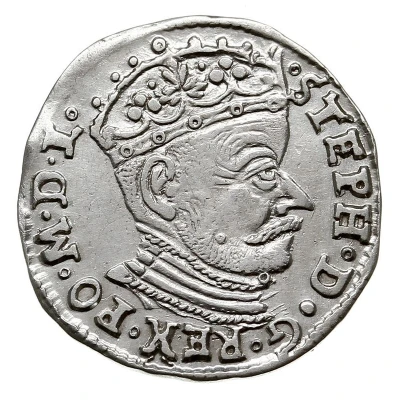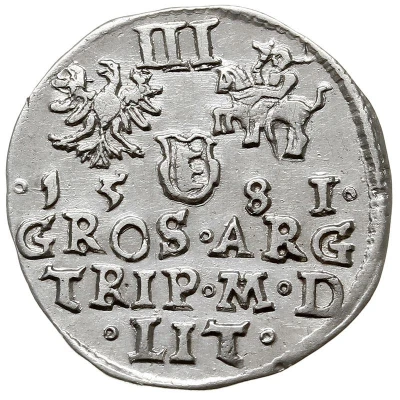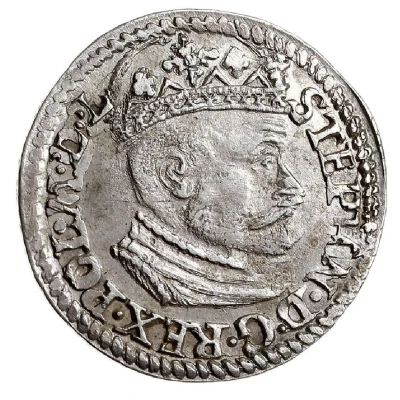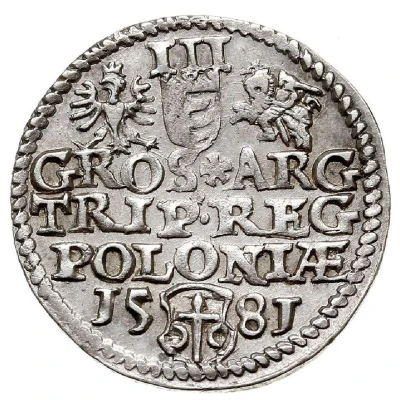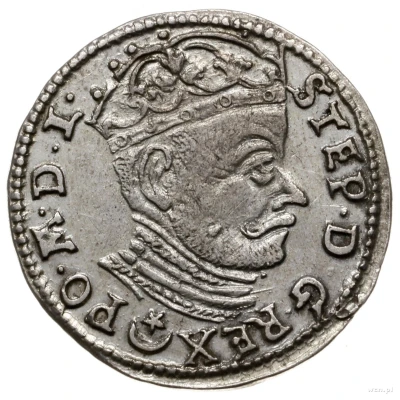
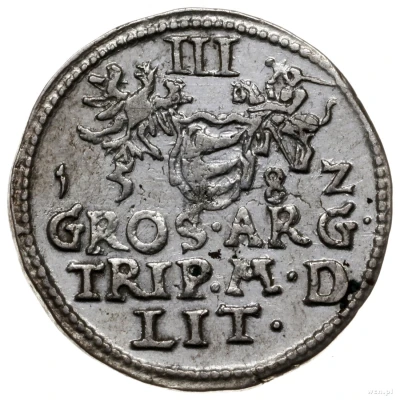

© Warszawskie Centrum Numizmatyczne s.j.
Trojak litewski - Stefan Batory Wilno; Leliwa below bust
| Silver (.844) | 2.3 g | 21 mm |
| Issuer | Polish–Lithuanian Commonwealth |
|---|---|
| King | Stephen Báthory (1576-1586) |
| Type | Standard circulation coin |
| Years | 1581-1583 |
| Value | 3 Groschens (Trojak) (0.1) |
| Currency | First Zloty (1573-1795) |
| Composition | Silver (.844) |
| Weight | 2.3 g |
| Diameter | 21 mm |
| Shape | Round |
| Demonetized | Yes |
| Updated | 2024-10-07 |
| Numista | N#63417 |
|---|---|
| Rarity index | 80% |
Reverse
Inscription in three lines with date above divided by Bathory family arms. At top, Polish eagle, value (III) and Lithuanian rider
Script: Latin
Lettering:
III
15 82
GROS · ARG ·
TRIP · M · D
LIT·
Unabridged legend: Grossi argenti triplex magni ducatus Lithuaniae
Translation: Silver three grossi of the Grand Duchy of Lithuania
Comment
Iger V.81.3aIger V.81.3b
Iger V.81.3c
Iger V.81.3d
Iger V.81.3e
Iger V.81.3f
Iger V.81.3g
Iger V.81.3h
Iger V.81.4a
Iger V.81.4b
Iger V.82.1a
Iger V.82.1b
Iger V.82.1c
Iger V.82.1d
Pictures: © WCN
Iger V.82.1e
Iger V.82.2a
Iger V.82.2b
Iger V.82.2c
Iger V.83.1a
Iger V.83.1b
Iger V.83.1c
Interesting fact
The Trojak litewski coin was used as a means of payment in the Polish-Lithuanian Commonwealth during the 16th century, and it was the first silver coin to be introduced in the region. It was minted in Wilno (now known as Vilnius, Lithuania) and features an image of Stefan Batory, the Grand Duke of Lithuania, on one side, and the Leliwa coat of arms on the other. The coin was made of silver (.844) and weighed 2.3 grams. Despite its small size, the Trojak litewski was an important symbol of the Commonwealth's economic and political power during that time.
